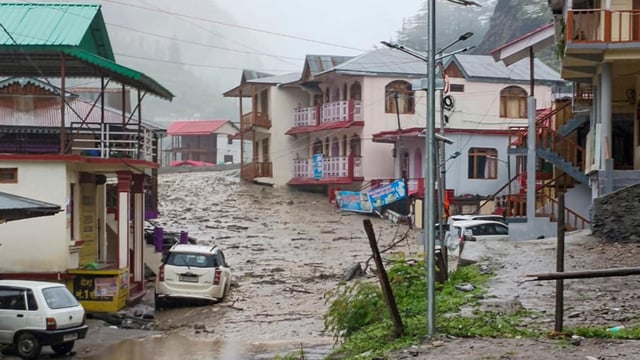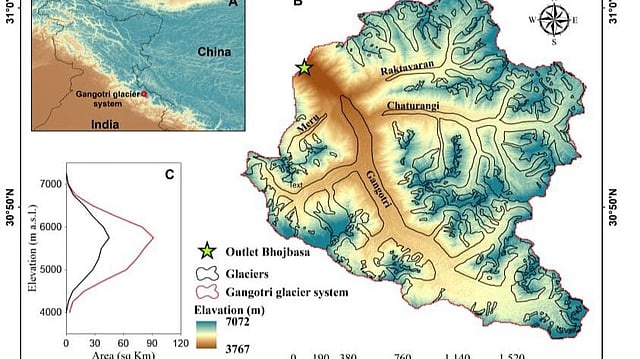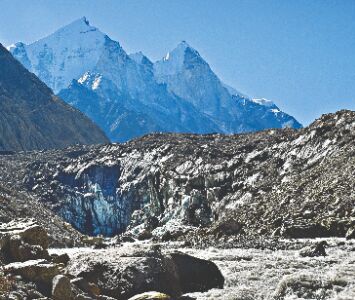Overview
- IIT Indore’s Glaci‑Hydro‑Climate Lab reconstructed 1980–2020 streamflow using the SPHY model calibrated with field discharge, satellite‑derived glacier mass balance and snow‑cover data.
- Mean annual contributions were quantified as 64% from snowmelt, 21% from glacier melt, 11% from rainfall‑runoff and 4% from baseflow.
- The study reports a post‑1990 shift in peak discharge from August to July, which the authors link to lowered winter precipitation and earlier seasonal melting.
- Decadal analysis shows variability, with the highest decade‑average discharge of about 29 m³/s during 2001–2010 coinciding with the highest decadal temperature of 3.4°C, and August snowmelt share moving from 70% to 54% to 41% before rising to 57% in 2011–2020.
- Scientists warn the changing timing and source mix could disrupt irrigation and hydropower operations, urging sustained monitoring, high‑resolution climate projections and climate‑resilient water management in programmes such as Namami Gange.


